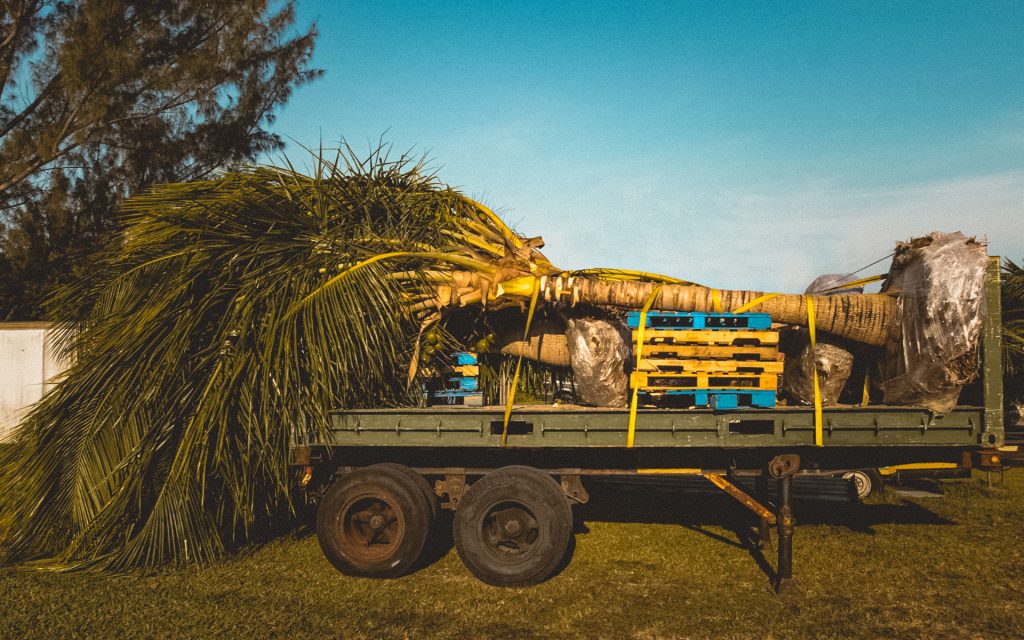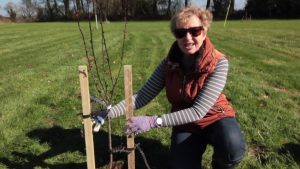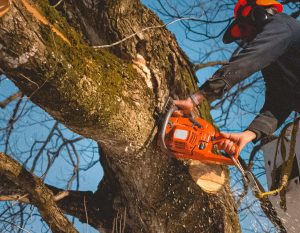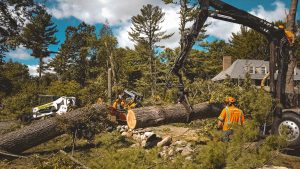Banana trees, with their lavish foliage and tropical charm, can be a magnificent expansion to any garden. Notwithstanding, there are times when you could wind up confronted with the need to eliminate these trees. Whether it’s because of excess, infection, or a craving to recover the space for different plants, knowing How to Remove Banana Trees is fundamental. In this thorough aide, we will walk you through the bit by bit course of securely and really eliminating banana trees from your nursery.
Banana trees (Musa spp.) are known for their fast development and the great size they can accomplish. While they are cherished for their capacity to create delectable organic products, they can likewise become obtrusive, occupying significant room and assets in your nursery. Additionally, diseases and pests that pose a threat to the overall health of your garden can attack banana trees. Whether you’re a carefully prepared grounds-keeper searching for direction or a fledgling confronting your most memorable banana tree evacuation, this guide takes care of you. Thus, we should make a plunge and figure out how to say goodbye to those transcending banana trees while protecting the excellence and respectability of your nursery.
Understanding Banana Trees
Prior to jumping into the evacuation cycle, it’s fundamental to comprehend the qualities of banana trees and why you would have to eliminate them from your nursery.
Banana Tree Attributes
Banana trees, experimentally known as Musa spp., are one of a kind plants that are frequently confused with trees because of their tall, upstanding development. Here are a few key qualities:
Rapid Expansion: Banana trees are known for their energetic development. In ideal circumstances, they can grow a few feet in a solitary year, arriving at levels of 10 to 30 feet or more.
Gross Leaves: These trees produce huge, paddle-molded leaves that can be a few feet in length. Banana trees are known for their lush, green leaves, which give them their famous tropical look.
Natural product Creation: While many individuals develop banana trees for their flavorful natural product, not all banana trees are organic product bearing. A few assortments are elaborate and developed essentially for their alluring foliage.
Clustering: Banana trees frequently fill in groups or “little guys” around a focal plant. This implies that when you eliminate one tree, there might be others close by that likewise need consideration.
Explanations behind Evacuation
There are a few motivations behind why you could have to eliminate banana trees from your nursery:
Overgrowth: Banana trees can become boisterous and take up a lot of room in your nursery. Over the long haul, they might eclipse different plants or designs.
Disease: Banana trees are vulnerable to different illnesses, like Panama infection and dark Sigatoka. To stop the disease from spreading to healthy plants, it is essential to remove your infected tree as soon as possible.
Maintenance: A few landscapers decide to eliminate banana trees since they require steady consideration, including customary pruning and preparation, which can time-consume.
Space administration: If you have any desire to distribute the space involved by banana trees for different plants or finishing highlights, evacuation becomes fundamental.
Rejuvenation: Incidentally, landscapers might need to eliminate banana trees to revive the dirt and set it up for new plantings.
The first step in successfully removing banana trees from your garden is to comprehend the distinctive characteristics they possess and the potential difficulties they may present. We will walk you through the steps of preparing for and carrying out the removal in the following sections, ensuring that you do so safely and effectively.
Getting ready for Evacuation
Before you begin eliminating a banana tree from your nursery, assembling the essential devices and materials and making a few preliminary strides is critical. Legitimate arrangement guarantees that the expulsion cycle goes without a hitch and securely.
A. Accumulate the Essential Apparatuses and Materials:
Pruning Shears: You’ll require sharp pruning shears or loppers to manage the leaves and parts of the banana tree. Make certain that they are spotless and in good working order.
Shovel: A durable digging tool is fundamental for digging around the root chunk of the tree.
Mattock or Pickaxe: This device will be valuable for separating the dirt around the roots, particularly on the off chance that the tree has been in the ground for quite a while.
Garden Gloves: Wear thick, defensive gloves to protect your hands from thistles, bugs, and any expected contact with aggravations.
Security Stuff: Security ought to be a main concern. Wear security glasses or goggles to safeguard your eyes from garbage, and think about wearing long sleeves and jeans to protect your skin.
Wheeled cart or Nursery Truck: You’ll require something to ship the eliminated tree parts (leaves, branches, and trunk) to your removal region.
Removal Strategy: Choose a disposal strategy for the tree parts. Composting, curbside pickup, or a green waste disposal site are options.
B. Guarantee Safety:
Inform Others: Assuming that you have relatives or neighbors close by, advise them regarding your tree expulsion undertaking to forestall any coincidental experiences while you’re working.
Clear the Region: Eliminate any snags, garden furniture, or different things from the region around the tree to make a protected working space.
Check for Utility Lines: Prior to digging, contact your neighborhood service organizations to guarantee there are no covered utility lines (gas, water, power) nearby. During the removal process, it is essential to avoid causing damage to these lines.
C. Timing Matters:
Pick the Right Season: The best chance to eliminate a banana tree is regularly during the pre-spring or late-winter when the tree is less dynamic. This reduces the likelihood of regrowth and relieves the plant of stress.
D. Assemble Help:
Ask for Help: On the off chance that the banana tree is huge or on the other hand in the event that you’re not certain about handling the expulsion all alone, think about enrolling the assistance of a companion or recruiting an expert tree evacuation administration.
A successful banana tree removal process begins with adequate preparation. As will be discussed in the following sections, if you have your tools and safety precautions in place, you will be capable of effectively assessing the state of the tree, trimming its foliage, and digging out its roots. By following these means, you’ll guarantee that the expulsion interaction is both protected and productive.
Wellbeing Precautionary measures
Wellbeing ought to constantly be a main concern with regards to eliminating banana trees or any enormous plants from your nursery. Banana tree evacuation can include weighty apparatuses and possibly unsafe circumstances, so playing it safe is fundamental to safeguard yourself as well as other people engaged with the cycle.
A. Defensive Stuff:
Security Glasses or Goggles: Wear defensive eyewear to safeguard your eyes from flying garbage, falling branches, or some other expected perils.
Gloves: Thick, strong nursery gloves will safeguard your hands from thistles, unpleasant bark, and any aggravations you might experience.
Long Dress: Consider wearing long-sleeved shirts and jeans to shield your arms and legs from scratches and bug nibbles.
B. Legitimate Footwear:
Tough Boots: Pick agreeable, shut toe boots with slip-safe bottoms to give solidness and shield your feet from sharp articles or lopsided landscape.
C. Keep a Protected Separation:
Maintain spectators at a protected separation: Guarantee that anybody not straightforwardly engaged with the evacuation cycle stays at a protected distance to stay away from mishaps.
D. Utility Line Mindfulness:
Check for covered utility lines: Prior to digging close to the tree’s foundations, contact your nearby service organizations to recognize and check the areas of any underground utility lines to forestall mishaps and disturbances.
E. Evaluate the Tree’s Strength:
Search for Indications of Precariousness: Before you begin eliminating branches or digging, investigate the tree for any indications of unsteadiness, like inclining or debilitated branches. Assuming the tree appears to be temperamental, think about looking for proficient help.
F. Legitimate Apparatus Utilization:
Adhere to Producer Guidelines: For all tools and equipment used in the removal process, read and adhere to the manufacturer’s instructions.
Be Careful When Using Cutting Tools: Be cautious while utilizing pruning shears, loppers, or any cutting apparatuses. Maintain a firm grip on the tool and always cut away from your body.
G. Hydration and Rest:
Keep hydrated: Working outside can be truly requesting, so try to remain hydrated by drinking water consistently.
Enjoy Reprieves: Schedule frequent breaks if the removal process takes a long time to complete to avoid exhaustion or overwork.
H. Emergency treatment Pack:
Have an Emergency treatment Unit Helpful: Keep a fundamental medical aid unit close by if there should be an occurrence of minor wounds.
I. Be Aware of Ecological Effect:
Discard Flotsam and jetsam Appropriately: Guarantee that you discard eliminated tree parts in a naturally capable way, following neighborhood guidelines.
J. When necessary, seek professional assistance:
Take into account Professional Assistance: In the event that you are uncertain about any part of the expulsion cycle, or on the other hand assuming that the tree is especially enormous or hard to make due, it very well might be more secure to enlist an expert tree evacuation administration.
By playing it safe, you can essentially lessen the dangers related with eliminating banana trees from your nursery. Recollect that wellbeing ought to constantly start things out, and it’s crucial to approach this errand with care and scrupulousness. With the right defensive stuff and a security cognizant outlook, you can continue with trust in the expulsion cycle.
Step by Step Expulsion Interaction
Now that you’ve arranged for the expulsion and taken the important security insurances, how about we plunge into the bit by bit course of eliminating banana trees from your nursery. Observe these rules cautiously to guarantee a smooth and powerful expulsion.
A. Survey the Tree:
Assess Well Being and Strength: Evaluate the banana tree’s overall health prior to cutting or digging. Search for indications of sickness, shakiness, or harm. In the event that the tree seems sick or fundamentally shaky, consider reaching an expert tree evacuation administration.
B. Pruning:
Trim the Leaves and Branches: Utilizing pruning shears or loppers, start by managing the leaves and parts of the banana tree. Begin at the top and work your direction down. This step diminishes the heaviness of the tree and makes it simpler to deal with.
Eliminate Dead or Sick Development: Recognize and eliminate any dead or ailing branches, as well as any leaves giving indications of nuisances or infection. Properly dispose of these cuttings.
C. Recovering the Roots:
Dig a Channel: Utilize a digging tool to dig a channel around the foundation of the banana tree, around 1 to 2 feet from the storage compartment. Dig to a profundity of something like 1-2 feet, contingent upon the size of the tree.
Uncover the Roots: Cautiously dig and uncover the primary foundations of the tree. Be mindful not to harm the roots as you work.
Cut the Primary Roots: Utilizing a mattock or pickaxe, slice through the uncovered roots. Begin with the more modest roots and move gradually up to the thicker ones. Be patient and take as much time as necessary to stay away from exorbitant power, which can prompt injury or instrument harm.
Slacken the Dirt: Try to wiggle the tree trunk occasionally as you cut the roots to see if it becomes loose in the soil. Keep cutting and relaxing until you can move the tree.
D. Eliminating the Tree:
Overturn the Tree: When the tree is adequately slackened from the dirt, tenderly push or pull it toward the path you maintain that it should fall. Guarantee that there are no individuals or designs in the way of the falling tree.
Finished product: In the event that the tree doesn’t overturn effectively, make a finished product through any leftover roots or connective tissues, and cautiously guide it to the ground.
E. Managing Stumps:
Eliminate the Stump: After the tree is down, you can choose whether to eliminate the stump or leave it in the ground. Stump evacuation can be tested and may require exceptional gear. Consider using a stump grinder or hiring a professional if you decide to remove it.
F. Tidy Up:
Clear Flotsam and jetsam: Accumulate every one of the cut branches, leaves, and tree trunk segments and spot them in a handcart or nursery truck for removal.
Reestablish the Region: To level the ground, add soil to the hole created by the removed tree and tamp it down. You can likewise replant the region with new vegetation or arranging highlights.
By adhering to these bit by bit guidelines, you can effectively eliminate a banana tree from your nursery. Make sure to work persistently and deliberately, taking consideration not to rush any step of the interaction. With the banana tree eliminated, you’ll have a new material for your nursery and the valuable chance to replant or overhaul the space as you see fit.
Removal
When you’ve effectively eliminated a banana tree from your nursery, it’s fundamental to appropriately discard the tree parts, including branches, leaves, trunk, and possibly the stump. Legitimate removal cleans up your nursery as well as guarantees that you are ecologically dependable. This is the way to deal with the removal interaction:
A. Leaves and Branches:
Composting: Assuming the branches and leaves are sans sickness, you can compost them. Shred or cleave them into more modest parts to accelerate disintegration. Try not to compost any parts that give indications of sickness or bugs.
Green Waste Pickup: Numerous regions offer curbside pickup of green waste, which incorporates plant materials like branches and leaves. Check with your neighborhood squander the executives’ experts for explicit rules and timetables.
Mulching: Alternately, you can turn the branches into mulch with a wood chipper, which can be used in landscaping or gardening projects.
B. Tree Trunk:
Cut and Split for Kindling: Assuming that the tree trunk is significant and the wood is appropriate for consuming, consider cutting it into kindling estimated pieces. Season the wood by permitting it to dry for a long time before use.
Reuse or Reuse: Get inventive with reusing the wood. It can be used for a variety of do-it-yourself projects, like building furniture or structures for your garden.
Recycle: A few regions offer wood reusing administrations. Check with your neighborhood reusing focus to check whether they acknowledge tree trunks.
C. Stump:
Grinding: If you decide to remove the stump and have access to a stump grinder, use it to grind it to a depth below the surface of the ground. If you lack the skills to do it yourself, stump grinding services are also available for hire.
Regular Decay: You also have the option of allowing the stump to naturally decay over time. Cover it with soil and keep it sodden. The stump will eventually decompose and become a part of the soil over the course of this method, which may take several years.
D. Lawful Contemplations:
Really take a look at Nearby Guidelines: Make certain that you adhere to all local rules and regulations regarding tree removal and disposal. A few regions might have explicit standards in regards to the removal of tree garbage or the utilization of stump processors.
Grant Necessities: Contingent upon your area and the size of the tree, you might require a grant for tree expulsion. Check with your neighborhood government or civil specialists to decide whether a license is fundamental.
Legitimate removal of tree parts keeps up with the style of your nursery as well as adds to capable ecological practices. By treating the soil, reusing, or reusing the eliminated tree materials, you can limit squander and possibly benefit your nursery or finishing endeavors. To ensure that your disposal methods meet local legal requirements, always adhere to local regulations and guidelines.
Tidying Up
After effectively eliminating a banana tree from your nursery and appropriately discarding its parts, it’s fundamental to complete the cycle by tidying up the workspace and reestablishing the space to its past condition. Legitimate cleanup improves the presence of your nursery as well as guarantees security and preparation for future finishing or establishing projects. This is the way to go about it:
A. Clear Flotsam and jetsam:
Gather Free Garbage: Assemble any excess little garbage, twigs, or leaves in the space where you eliminated the banana tree. Utilize a rake or your hands to clear these free materials.
Examine for Stray Roots: Check for any wanderer or cut off roots that could in any case be in the ground. Eliminate them to forestall potential regrowth.
B. Prepare the Surface:
Fill the Opening: Assuming that you eliminated the tree stump, fill the opening left by the stump’s expulsion with soil. Pack it down immovably to guarantee the ground is level and stable.
C. Replant or Update:
Think about New Plantings: Now that the space is leveled and cleared, think about what you want to do with it. It can be replanted with new flowers, plants, or other garden elements.
Upgrade the Space: On the other hand, make a move to overhaul the region with finishing components, for example, pathways, garden beds, or brightening stones.
D. Mulch or Topdressing:
Apply Mulch: On the off chance that you replant the region, consider applying a layer of mulch to assist with holding dampness, stifle weeds, and work on the style of the nursery.
Topdressing: For a more cleaned look, you can topdress the region with a layer of embellishing rock or stones.
E. Water and Support:
Water New Plantings: Assuming that you’ve replanted the region, water the new plants completely to assist them with laying out their root foundations.
Ordinary Support: Keep on focusing on the area as a feature of your standard nursery upkeep schedule, including watering, weeding, and treating on a case by case basis.
F. Evaluate Safeguard Measures:
Do whatever it may take to Forestall Regrowth: Since banana trees can be relentless in sending up new shoots, consider applying a root boundary or going to other precaution lengths on the off chance that you intend to replant in a similar region.
G. Last Investigation:
Examine the Work: Stroll around the area and assess your cleanup endeavors. Ensure there are no free branches, roots, or instruments abandoned.
H. Security Check:
Guarantee Wellbeing: Affirm that the region is ok for you and others, particularly assuming kids or pets continue your nursery.
I. Record the Procedure:
Take Photographs: To keep track of the removal process and the transformation of your garden space, take “before” and “after” photos.
By finishing these cleanup steps, you can guarantee that your nursery is left in a flawless condition and prepared for its next stage. Whether you decide to replant the region, overhaul it, or basically keep up with it, your nursery will profit from the expulsion of the banana tree and the consideration you’ve taken to reestablish it. Recollect that standard support and watchfulness will help forestall the regrowth of banana tree shoots and keep your nursery putting its best self forward.
Forestalling Future Development
After effectively eliminating a banana tree and reestablishing your nursery, it means quite a bit to go to proactive lengths to forestall future banana tree development in a similar region. Banana trees are known for their capacity to regrow from the excess underground root growth or from suckers (new shoots) that rise up out of the ground. Follow these preventive measures to keep your garden looking its best and prevent banana tree reinfestation:
A. Screen the Region:
Normal Examinations: Intermittently investigate the region where the banana tree was taken out for any indications of regrowth. Early location makes control simpler.
B. Get rid of suckers:
Recognize Suckers: Look out for any banana tree suckers that might arise around the site where the tree was taken out.
Prune Suckers: When you notice suckers, use pruning shears to remove them at ground level. Be watchful, as suckers can seem both close to the first tree site and farther away.
C. Put up barriers at the root:
Introduce Root Obstructions: Consider introducing a root obstruction made of areas of strength for (e.g., plastic or metal) around the border of the first tree site. This hindrance can assist with keeping underground sprinters from spreading and creating new banana trees.
D. Use of a Herbicide With Caution:
Counsel an Expert: In the event that regrowth is constant, you might think about utilizing herbicides. Be that as it may, it’s pivotal to counsel a cultivating proficient or neighborhood horticultural expansion administration for exhortation on which herbicides are reasonable and how to securely utilize them.
E. Watchful Support:
Regular upkeep of the garden: Keep a careful nursery upkeep schedule, which incorporates weeding and observing for any indications of banana tree regrowth.
Pruning and Preparing: Appropriately prune and prepare any excess banana trees to empower sound development and keep them from becoming intrusive.
F. Think about Elective Finishing:
Elective Plants: Assuming banana tree regrowth keeps on being an issue, consider supplanting banana trees with different sorts of plants that are less obtrusive and more straightforward to oversee in your nursery.
Related Posts:
Should i remove grass around trees
G. Remain Informed:
Norms for the Area: Remain informed about nearby rules, guidelines, and limitations with respect to the planting and evacuation of banana trees. Consistence with nearby guidelines is fundamental.
Forestalling future banana tree development requires continuous cautiousness and support. By making these preventive strides, you can partake in a nursery free from the steady regrowth of banana trees and keep up with the tasteful and utilitarian parts of your outside space. Recall that customary reviews and early mediation are vital to effectively overseeing banana tree regrowth and guaranteeing a flourishing nursery.
Conclusion
Congrats on learning how to successfully remove banana trees from your garden! This exhaustive aide has outfitted you with the information and steps expected to handle this assignment securely and actually. How about we recap the fundamental action items: Understanding Banana Trees: We started by understanding the qualities of banana trees and why you would have to eliminate them. From quick development to potential infection vulnerability, realizing these variables assists you with arriving at informed conclusions about expulsion. Getting Ready for Removal: Appropriate arrangement is essential. We talked about social events, the important apparatuses and materials, guaranteeing security, and choosing the perfect opportunity for expulsion.
FAQs
- Can a banana tree be transplanted rather than removed?
Due to their size and sensitivity, banana trees can be challenging to transplant. It’s typically not suggested except if the tree is somewhat little. On the off chance that you really do endeavor to relocate, guarantee you uncover however much of the root ball as could reasonably be expected and give satisfactory consideration in the new area.
- How can I stop the banana trees from growing back after I remove them?
Forestalling regrowth can be a test since banana trees are industrious. To stop regrowth, eliminate any suckers immediately, introduce root hindrances, and think about utilizing herbicides (with alert). Normal upkeep and observing are vital to holding regrowth under wraps.
- Can the banana tree parts be used as mulch or compost?
Indeed, you can utilize the eliminated banana tree parts for treating the soil or mulch for however long they are without infection. Destroying or slashing the branches and leaves can accelerate deterioration. Try not to compost any unhealthy materials to forestall the spread of infections to different plants.
- When is the best opportunity to eliminate a banana tree?
The best opportunity to eliminate a banana tree is regularly during pre-spring or late-winter when the tree is less dynamic. This reduces the likelihood of regrowth and relieves the plant of stress.



